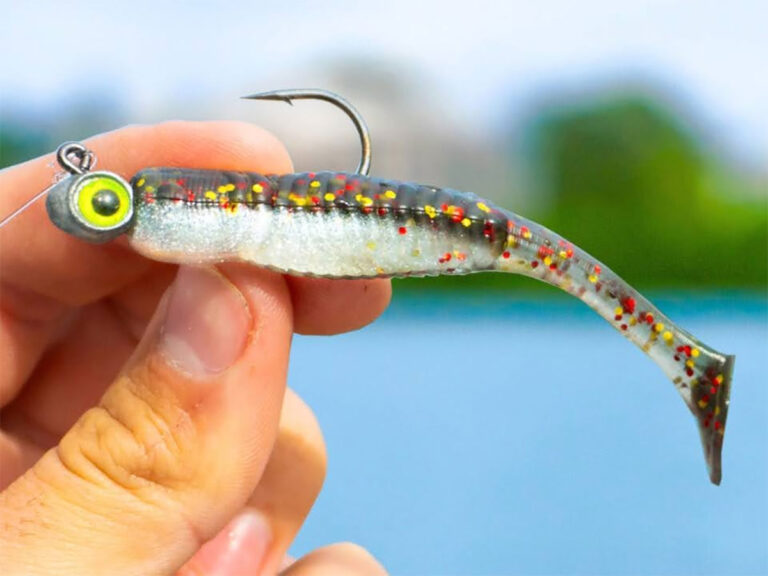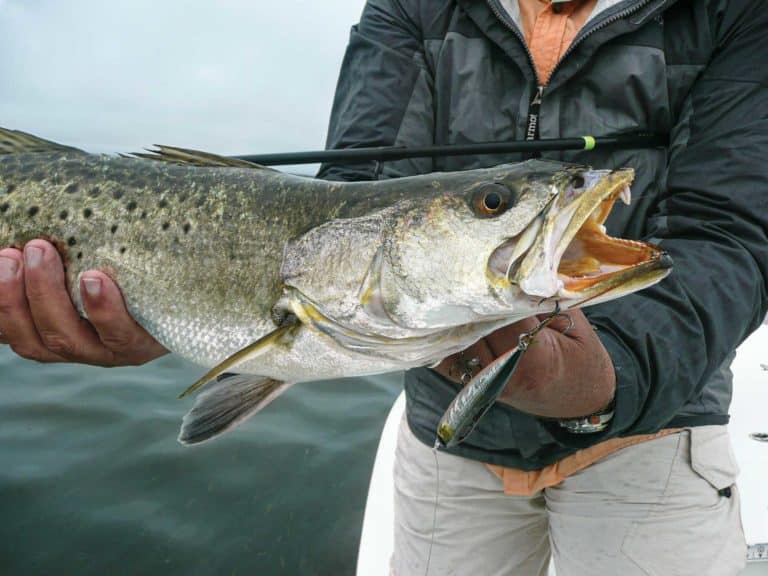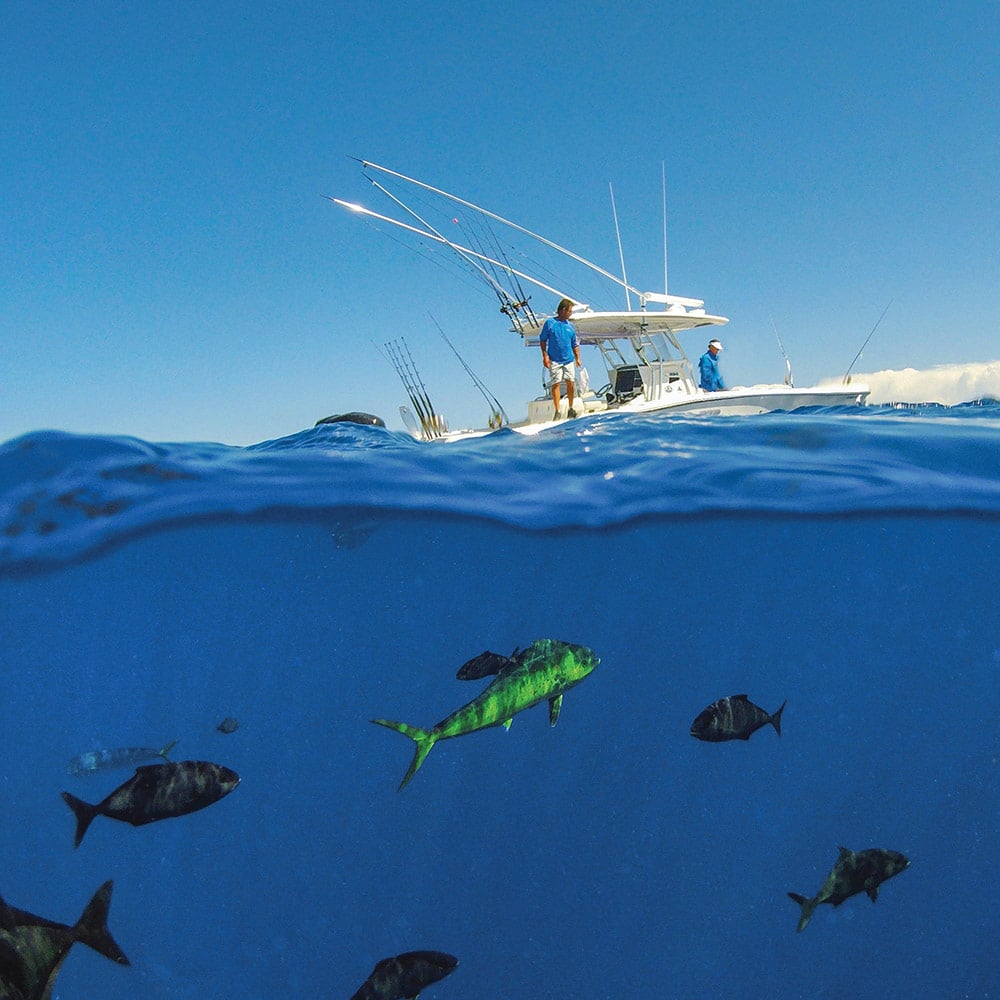
Just how crucial is it to closely match your lures and natural baits in size and coloration to the predominant baitfish? The vast selection available in lure color and design and varieties of live baits makes your choice quite confusing at times. What’s the real scoop?
Selective Feed
When a particular baitfish species gathers within an environment, game fish often dial in on them exclusively. For instance, snook foraging on migrating mullet schools likely will ignore other baits, such as pinfish or herring. It’s a form of piscatorial tunnel vision in coastal, inshore and offshore waters.
Case in point: Dee Kaminski and I trolled along an Islamorada weed line, occasionally watching dolphin pursuing tiny flying fish. Our spread of medium ballyhoo, both plain and blue-skirted (the latter to mimic flying fish) went unnoticed. Then, acting on a theory, I derigged a Williamson Live Ballyhoo artificial bait and slipped its tiny-diameter blue-and-white skirt over a small, fresh ballyhoo, then swapped it out with a larger skirted bait in the spread. That specific combination, which closely resembled those small fliers, caught three dolphin and a 70-pound sailfish. We had cracked the code on a textbook selective feed.
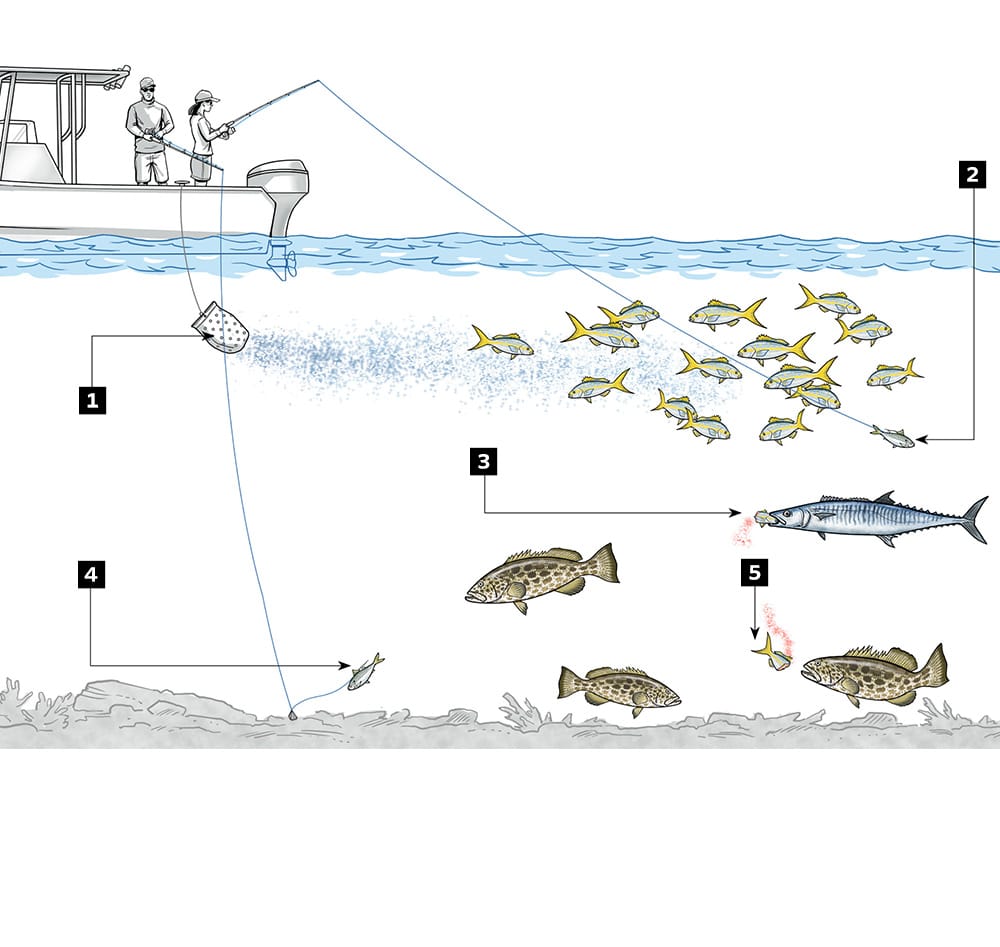
Go High, Go Low
[2] Deploy a live yellowtail for kingfish and other pelagics
[3] Yellowtail activity draws other predators
[4] Send a live bait down for reluctant bottomfish
[5] Bottomfish below pick up yellowtail scraps Steve Sanford
The Tuna Boys
In the Northeast Canyons, Justin Braun trolls an elaborate presentation of spreader bars and baits. He first sets waves of different color spreader bars to test the bite: first wake (off both the port and starboard sides), green bars; next row, rainbow bars; and pink bars behind those. Once he decks a fish, Braun checks its stomach contents. “This tells a lot,” he says. “If the yellowfin chucks up small squid, we’ll dump the big bars and put out the small stuff. The more baits resembling the squid the tuna are gorging on, the more strikes we’re bound to get. If it’s large squid, we’ll adjust our spread to match. And if a certain color is getting the strikes, we’ll fish multiple bars of that same color.”
Daytona Beach Way
When Daytona Capt. Eddie Oliveras finds blackfin tuna feeding on minnows under sargasso weed, he trolls small bonito strips behind ¼-ounce egg sinkers stuffed inside tiny squid skirts. The undulating action from these diminutive, silvery bait strips draws the attention of blackfins. “A lot of these blackfins are less than 5 pounds,” says Oliveras. “But this rig catches them when they won’t look at anything else, and we sometimes get 15- to 20-pounders on these mini strips. Success here depends on our matching small minnows.”
Dolphin Dazzlers
Like the above blackfin scenario, weed-line dolphin often key on puffer fish, bar jacks or banded rudder fish under weeds and debris. For a consistent bite on school fish, select artificials mimicking this forage. For example, the yellow bucktail, a dolphin standard, resembles juvenile puffer fish, whereas a white bucktail more closely mimic small jacks or blue runners.
Read Next: 7 Best Flounder Lures
Modern lures and color patterns eerily resemble natural forage species; they’re often more productive than standard bucktails when dolphin get selective or there’s heavy fishing pressure. A school dolphin favorite of ours, Rapala’s X-Rap Twitchin’ Mullet in gold and olive, is a dead ringer in shape, size and color to these weed-line baits, and its hard body enables us to bail school fish without having to change it out, unlike a bucktail, which loses its dressing after catching a few fish. Keep a couple of these or similar hard baits rigged on spinning tackle, ready to launch.
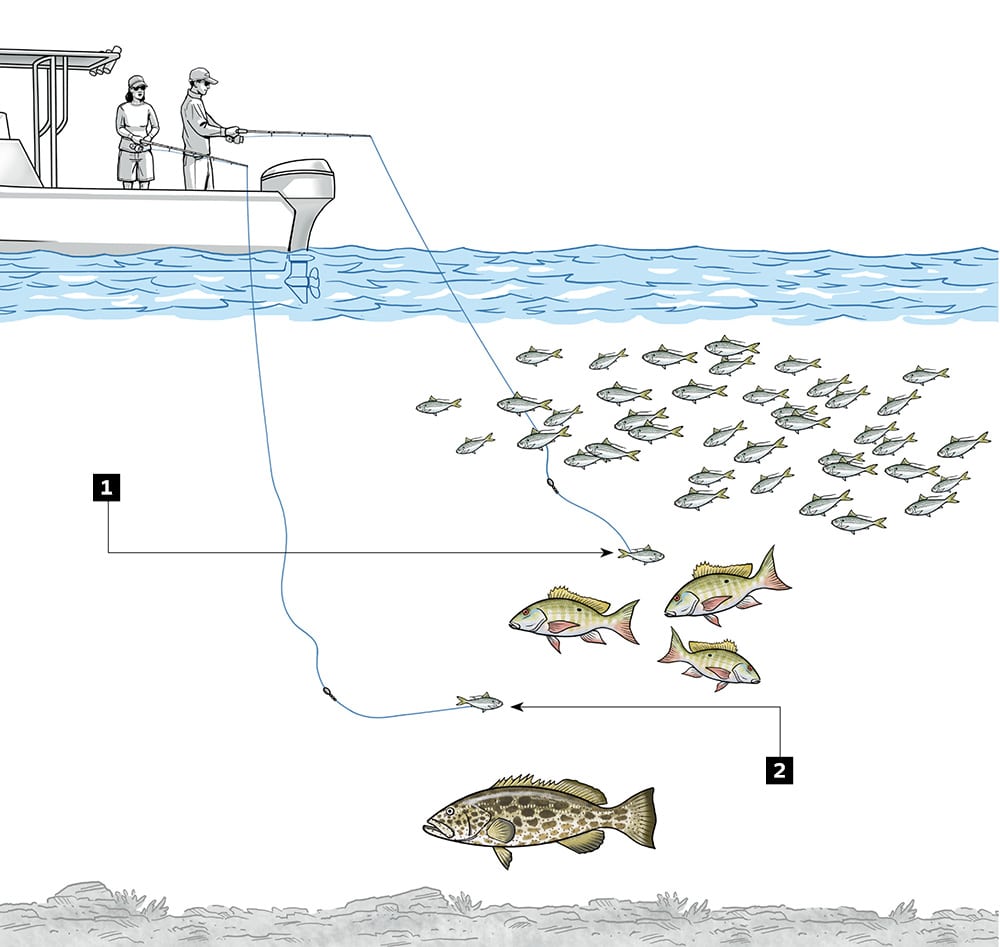
Split-Level
[2] Send live bait deep for selective bottom dwellers Steve Sanford
Bottomfishing
Forage matching fools large bottomfish such as gray snapper and big grouper too.
“I used to take boxes of squid and sardines for bottom bait,” says Oliveras. “Now I don’t even use squid. When there’s an abundance of a particular bait over our bottomfishing spots, I’ll sabiki these baits and drop them back down, live or cut.
Read Next: Nuances in Jig Selection and Jigging Techniques
“A good example is when threadfins are solid from the surface to middepth over a bottom spot, gray snapper and other predators feed on them. Other fish, including snapper and grouper, scavenge the scraps that drop to the bottom. Dropping once-frozen squid or sardines just isn’t going to fool many big ones in this situation. But drop what they’re keying on and you’ll hook quality fish.”
For black grouper off the Florida Keys or the Bahamas, Oliveras often drops half a fresh-caught yellowtail. “As we’re yellowtailing, kings, ceros and ’cudas slash through the surface-chummed ’tails. Remains of these ’tails that drop to the bottom draw grouper, horse-eye jacks and amberjacks. These grouper become so dialed to this natural outfall, they’ll sometimes forgo a frantic live yellowtail for a large chunk of a fresh dead one.”
Inshore in Particular
“I believe fish have memories,” says Capt. Jamie Hough of Charleston, South Carolina. “They often return to their breeding areas, and I’m convinced they know certain spots hold specific bait at certain times.
“When I compete in redfish tournaments off Louisiana, I know crawfish are among their favorite food, though I’ve never seen a crawfish in these waters. Yet somewhere during their migrations, they come across crawfish, so they want them. It makes sense to choose similarly patterned artificials. These fish know what areas hold specific types of bait and often show a preference for it.”
Read Next: Top 10 Baitfish Flies
Seatrout dial in even more, he explains. “In our local waters, they know where shrimp will be,” he says. “So they frequent these areas to find them. When they do, they’ll get on a shrimp-only kick. The really big trout also get on a large mullet kick. This happens during the winter, when both small and large trout gather in holes within 2 to 3 feet of water, looking for sun-warmed bottom. I’ve seen 12-inch mullet swimming with school trout in these holes, and those are the ones getting picked off by the larger trout.”
Hough claims the Wando River sees the first push of menhaden a month earlier than the waterway. “Those fish in the waterway know menhaden will head their way,” Hough says. “I’ll net menhaden from the Wando, bring them to the waterway, and crush big redfish and trout — the very fish anticipating the menhaden migration.”
In Dumbfounding Bay off Miami, the October mullet run ignites an exciting tarpon fishery. And these Intracoastal Waterway tarpon are about as particular as they come. If you’re not slow-trolling or drifting freshly netted mullet, you’re spinning your wheels. To a lesser degree, these fish fall for trolled swimming lures that closely resemble the mullet in size and color.
Matching the hatch, a proven tactic, applies to all types of fishing.







